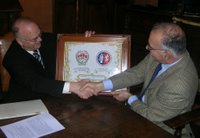 On Wednesday, March 1, the Umbra Institute and the University of Perugia signed an agreement of mutual cooperation for the exchange of students, faculty, and courses that will have far reaching and long term implications for both institutions.
On Wednesday, March 1, the Umbra Institute and the University of Perugia signed an agreement of mutual cooperation for the exchange of students, faculty, and courses that will have far reaching and long term implications for both institutions.
For students studying at Umbra, it will afford them an opportunity in the near future to study at the University of Perugia. For students at the University of Perugia, courses offered at the Umbra Institute will be available for them. This accord furthers Umbra’s relationship with Italian institutions in Perugia. Last month, Umbra signed an agreement of cooperation with the Commune di Perugia and maintains direct ties with the Universita per Stranieri in Perugia.
 The ceremony took place at the historic university building and seat of the administration located at the Piazza dell’Universita (formerly the Monastery of the Olivetani). Umbra’s program director, Dr. Charles Jarvis, and Perugia’s Rector Professor Francesco Bistoni, exchanged words, signatures, and a handshake to mark the occasion (in photo, top). “This is a landmark event,” said Jarvis, “and it opens up a multitude of educational and cultural opportunities for both institutions in furthering the exchange of courses, faculty, and students. We are proud to be associated with such a distinguished and outstanding university as the University of Perugia.” Jarvis, along with Italian language director Francesco Gardenghi (in background, photo at left) had been working with the University for months to form this agreement.
The ceremony took place at the historic university building and seat of the administration located at the Piazza dell’Universita (formerly the Monastery of the Olivetani). Umbra’s program director, Dr. Charles Jarvis, and Perugia’s Rector Professor Francesco Bistoni, exchanged words, signatures, and a handshake to mark the occasion (in photo, top). “This is a landmark event,” said Jarvis, “and it opens up a multitude of educational and cultural opportunities for both institutions in furthering the exchange of courses, faculty, and students. We are proud to be associated with such a distinguished and outstanding university as the University of Perugia.” Jarvis, along with Italian language director Francesco Gardenghi (in background, photo at left) had been working with the University for months to form this agreement.
 The University of Perugia is in its 698th year of existence, making it the third-oldest university. Attending the ceremony were members of staff and faculty of both institutions as well as special guests from Arcadia University, Cornell University, and the University of Denver.
The University of Perugia is in its 698th year of existence, making it the third-oldest university. Attending the ceremony were members of staff and faculty of both institutions as well as special guests from Arcadia University, Cornell University, and the University of Denver.


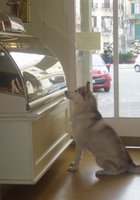



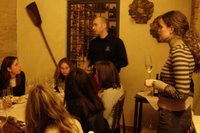
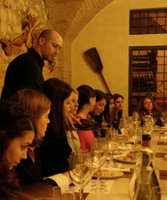 the north of Italy. Manna from the vineyard Franz Haas in Alto Adige was a light-bodied white that can be paired with poultry dishes. Manna was also a 2004 IGT wine. To finish up, students tasted a red wine from Puglia, in the south of Italy. The Negramaro Cantalupi from Conti Zecca was a unique wine in that, the grapes used to create the wine, negramaro grapes, are found only in Puglia. A smooth red wine, the Negramaro Cantalupi would compliment meat dishes.
the north of Italy. Manna from the vineyard Franz Haas in Alto Adige was a light-bodied white that can be paired with poultry dishes. Manna was also a 2004 IGT wine. To finish up, students tasted a red wine from Puglia, in the south of Italy. The Negramaro Cantalupi from Conti Zecca was a unique wine in that, the grapes used to create the wine, negramaro grapes, are found only in Puglia. A smooth red wine, the Negramaro Cantalupi would compliment meat dishes. 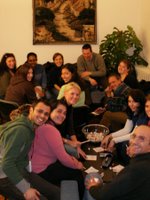
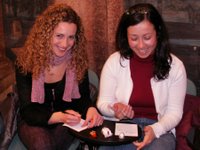
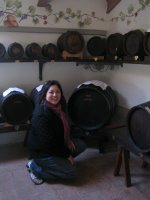 I’ve been on since I arrived in Italy in September. Witnessing the making of balsamic vinegar and Parmigiano-Reggiano cheese was not only interesting, but allowed me to learn about foods that I eat daily. The balsamic vinegar “farm” was actually situated in a family home in Modena, Italy, where this particular family made the infamous Aceto Balsamico Traditionale di Modena. Here, fermentation occurs during the summer in wooden barrels, each with a different wood providing a distinct flavor.”
I’ve been on since I arrived in Italy in September. Witnessing the making of balsamic vinegar and Parmigiano-Reggiano cheese was not only interesting, but allowed me to learn about foods that I eat daily. The balsamic vinegar “farm” was actually situated in a family home in Modena, Italy, where this particular family made the infamous Aceto Balsamico Traditionale di Modena. Here, fermentation occurs during the summer in wooden barrels, each with a different wood providing a distinct flavor.”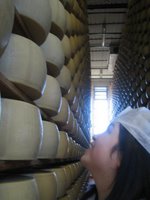 mixing and heating, the mixture begins to curdle naturally and the cheese is cut into two pieces and strained through cheesecloth. The leftover liquid is centrifuged to remove any cream and fed to pigs nearby (which is why proscuitto di parma tastes so good!). Each cheese spends one day in a wooden molding, one day in a steel molding, a month in a salt-water bath, and finally two or more years in the warehouse.”
mixing and heating, the mixture begins to curdle naturally and the cheese is cut into two pieces and strained through cheesecloth. The leftover liquid is centrifuged to remove any cream and fed to pigs nearby (which is why proscuitto di parma tastes so good!). Each cheese spends one day in a wooden molding, one day in a steel molding, a month in a salt-water bath, and finally two or more years in the warehouse.” After the first month of intensive Italian language classes, it was encouraging to see such a large group of students appear for the first Tandem language exhange activity. More than 60 students – both Italians and Americans – gathered for icebreaking exercises and activities. Mauro Renna, student services associate and coordinator of the Tandem program, was excited to see so many students and to hear that many of them had made plans outside of the program with other Italian students.
After the first month of intensive Italian language classes, it was encouraging to see such a large group of students appear for the first Tandem language exhange activity. More than 60 students – both Italians and Americans – gathered for icebreaking exercises and activities. Mauro Renna, student services associate and coordinator of the Tandem program, was excited to see so many students and to hear that many of them had made plans outside of the program with other Italian students.

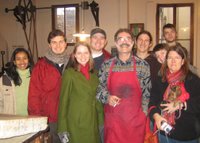 This Saturday, Umbra students were led to Città di Castello, a small Umbrian city famous in Italy as being the cradle of the country’s modern printing industry. The students had a tour of Italy’s oldest still-working printing company, run by Signor Gianni Ottaviani. Sig. Ottaviani is the seventh generation of owners of the family business, and explained that he has been setting type since he was a child. The students learned about the typographic, lithographic, and engraving processes and were given demonstrations by the enthusiastic Sig. Ottaviani in each one. The students also discussed the “ins and outs” of modern offset printing and saw how graphic layout and pagination programs are turned into printable files.
This Saturday, Umbra students were led to Città di Castello, a small Umbrian city famous in Italy as being the cradle of the country’s modern printing industry. The students had a tour of Italy’s oldest still-working printing company, run by Signor Gianni Ottaviani. Sig. Ottaviani is the seventh generation of owners of the family business, and explained that he has been setting type since he was a child. The students learned about the typographic, lithographic, and engraving processes and were given demonstrations by the enthusiastic Sig. Ottaviani in each one. The students also discussed the “ins and outs” of modern offset printing and saw how graphic layout and pagination programs are turned into printable files.